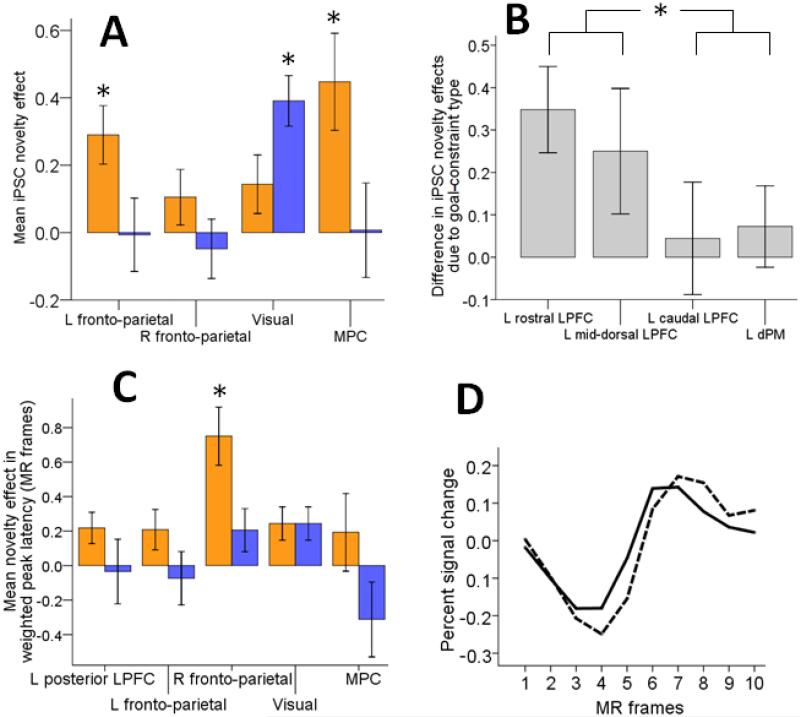Figure 3.
Results of the region of interest (ROI) analysis. A. The novelty effect in the integrated percent signal change (iPSC), computed by subtracting iPSC evoked by the usual videos from iPSC evoked by the original videos, averaged across each ROI subgroup in the abstract goal-constraint condition (shown in orange) and the concrete goal-constraint condition (shown in blue). B. Modulation of the iPSC novelty effect by goal-constraint type in the left LPFC ROIs. C. Differences in the time-course of BOLD response, computed by subtracting weighted peak latency during viewing the usual video endings from weighted peak latency during viewing the original video endings, averaged across ROIs within each cortical ROI subgroup in the abstract goal-constraint condition (shown in orange) and the concrete goal-constraint condition (shown in blue). D. Time-course of peri-stimulus BOLD response in the right rostral LPFC in the usual-abstract (shown in solid) and original abstract (shown in dashed) conditions; note, video context was presented during the first 6 sec, and was followed by final scenes presented during the next 2 sec.
* p < 0.01, error bars represent standard error of the mean (s.e.m.); L – left; R – right; MPC – medial parietal cortex; dPM – dorsal premotor cortex; MR frames – magnetic resonance frames (1 MR frame corresponds to 2 sec).

